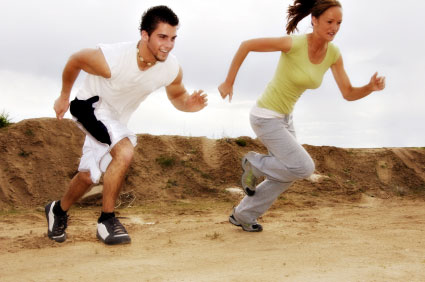TENS MACHINE
transcutaneous electrical nerve stimulation
WHAT IS IT?
TENS stands for transcutaneous (through the skin) electrical nerve stimulation and is a treatment that uses low voltage electrical currents to relieve pain. The gentle electrical current is passed through electrodes which are taped to the skin near the site of the pain. The current comes from a small battery-operated machine. Because the machines are quite portable and easy to use, people can use them at home.
HOW DOES TENS RELIVE PAIN?
It is not certain how TENS relieves pain. One suggestion is that the electrical current from a TENS machine stimulates the nerve fibre (A-beta) that carries signals relating to touch. The signals from the A-beta fibres travel to the spinal cord where they temporarily block the transmission of pain sensations to the brain – this is analogous to the ‘gate’ being closed - and so the body does not experience pain. This theory is known as the ‘gate control’ theory of pain.
TENS is also thought to increase release of endorphins - the body’s own natural painkilling substances, which are produced in the brain in response to pain or stress.
HOW EFFECTIVE IS TENS AT PAIN RELIEF?
The overall clinical evidence supporting TENS effectiveness is not clear as there are not enough research has been done to draw firm conclusions.
WHAT TYPE OF PAIN CAN A TENS BE USED FOR?
TENS can be used by people to treat a variety of acute and chronic pain conditions including:
- Low back pain
- Sciatica.
- Osteoarthritis.
- Rheumatoid arthritis.
- Fibromyalgia.
- Neck pain.
- Knee pain.
- Period pain.
- Neuropathic pain.
- Cancer pain.
*The electrodes MUST be placed near to the source of the pain, for example for calf pain they should be placed around the centre of the painful area.
WHAT DOES IT FEEL LIKE?
You will feel a buzzing or a tingling feeling on your skin where the electrodes are placed.
ARE THERE ANY SIDE EFFECTS?
Other than the occasional skin irritation where electrodes are applied to the skin, TENS appears to be free of any side effects.
WHEN IS TENS NOT RECOMMENDED?
TENS is NOT recommended in the following:
- If you have a pacemaker.
- If you have a severe heart disorder.
- If you have epilepsy.
- Not around the abdomen if you are in the first trimester of pregnancy.
- Over the front of your neck or over your face.
- Over an area of broken skin.
- If you have a cochlear implant hearing device.
*Always check with your doctor if you are thinking of using TENS.
WHERE CAN I GET A TENS MACHINE?
Physiotherapists (both in hospitals and in private practice) use TENS machines and they are available for loan or hire from some hospitals. However, they may not be widely available for hire as people who gain pain relief from TENS often find it convenient to buy their own machine for long-term use.
TENS machines can be bought from the many manufacturers on the internet, or from medical equipment suppliers, and from some pharmacies.
.





